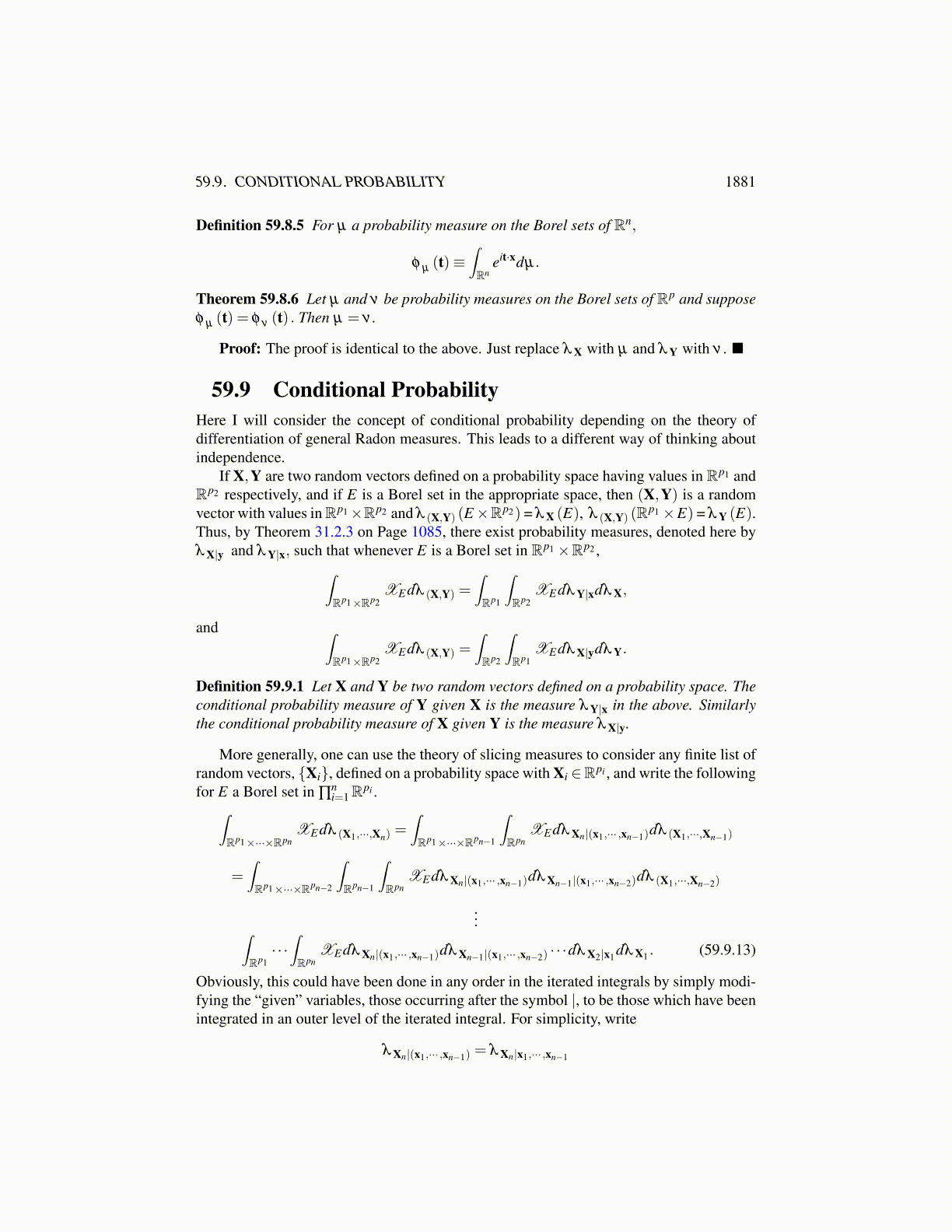
59.7. KOLMOGOROV’S INEQUALITY 1881
Now consider the second claim. Let
sk =k
∑j=1
a j
j
and s = limk→∞ sk Then by the first part,
s = limn→∞
1n
n
∑k=1
sk = limn→∞
1n
n
∑k=1
k
∑j=1
a j
j
= limn→∞
1n
n
∑j=1
a j
j
n
∑k= j
1 = limn→∞
1n
n
∑j=1
a j
j(n− j)
= limn→∞
(n
∑j=1
a j
j− 1
n
n
∑j=1
a j
)= s− lim
n→∞
1n
n
∑j=1
a j
Now here is the strong law of large numbers.
Theorem 59.7.5 Suppose {Xk} are independent random variables and E (|Xk|) < ∞ foreach k and E (Xk) = mk. Suppose also
∞
∑j=1
1j2 E
(∣∣X j−m j∣∣2)< ∞. (59.7.12)
Then
limn→∞
1n
n
∑j=1
(X j−m j) = 0
Proof: Consider the sum∞
∑j=1
X j−m j
j.
This sum converges a.e. because of 59.7.12 and Theorem 59.7.3 applied to the randomvectors
{X j−m j
j
}. Therefore, from Lemma 59.7.4 it follows that for a.e. ω,
limn→∞
1n
n
∑j=1
(X j (ω)−m j) = 0
The next corollary is often called the strong law of large numbers. It follows immedi-ately from the above theorem.
Corollary 59.7.6 Suppose{
X j}∞
j=1 are independent having mean m and variance equalto
σ2 ≡
∫Ω
∣∣X j−m∣∣2 dP < ∞.
Then for a.e. ω ∈Ω
limn→∞
1n
n
∑j=1
X j (ω) = m